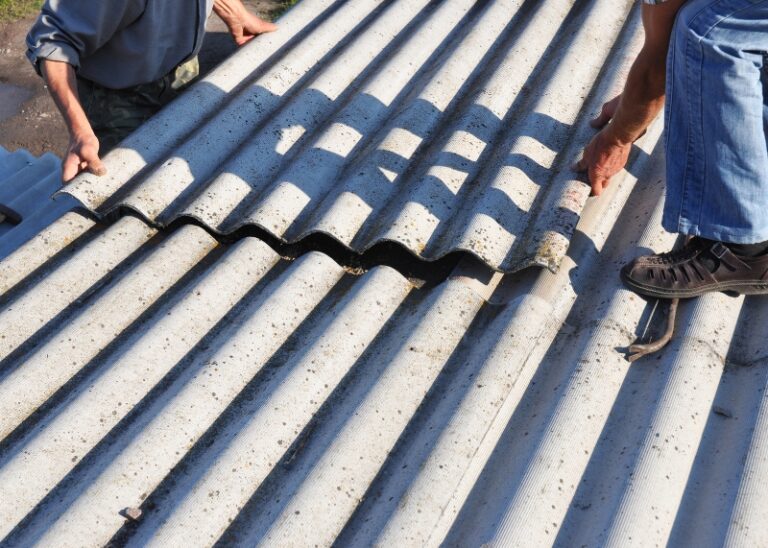Asbestos lawyers
Asbestos claims:
Your rights, our fight
Asbestos-related diseases, including mesothelioma and asbestosis, are devastating conditions that can severely impact your health, livelihood, and quality of life. At GMP Law, we understand the profound physical, emotional, and financial burden these illnesses place on you and your loved ones.
Our experienced team of asbestos and dust disease compensation lawyers is committed to helping you secure the compensation you deserve. We focus on navigating the complexities of your claim so you can focus on your health and recovery, taking one significant stress off your plate during this challenging time. You deserve the peace of mind that comes with knowing we’re fighting for the compensation that will support your future and ease your burden.
Why Choose Gerard Malouf & Partners
Understanding asbestos claims
Asbestos is a naturally occurring mineral that was widely used in construction and manufacturing throughout the 20th century due to its heat-resistant and durable properties. Unfortunately, exposure to asbestos fibres can have severe long-term health consequences, leading to debilitating illnesses like:
- Mesothelioma
- Asbestosis
- Asbestos-related lung cancer.
Asbestos exposure
In 2003, Australia officially banned the use of asbestos, marking a major turning point in efforts to reduce exposure. The ban was a response to increasing awareness of the health risks associated with asbestos and the widespread impact of asbestos-related diseases. However, despite this ban, the legacy of asbestos use still persists, as many buildings constructed before the ban still contain asbestos-containing materials.
Since the ban, exposure patterns have shifted, with historical workplace exposure declining significantly, while newer cases often arise from secondary exposure, DIY renovations, or through occupations that still encounter legacy asbestos materials. This has resulted in a shift in the types of asbestos-related claims we see today, as workers and homeowners who were not originally at risk are now encountering asbestos in older properties or through second-hand exposure.
We're here to help.
Common materials that contain asbestos
Asbestos was used in a wide variety of materials across both residential and commercial buildings. Some common items that may still contain asbestos include:
- Roofing and wall sheets (e.g., fibro or asbestos cement sheets)
- Insulation (e.g., pipe insulation, thermal insulation)
- Flooring (e.g., vinyl tiles, linoleum, and backing material)
- Ceiling tiles
- Roofing materials (e.g., asbestos cement roofing)
- Spray-on fireproofing
- Textiles (e.g., asbestos-containing fire-resistant fabrics)
- Automotive components (e.g., brake linings, clutch facings, gaskets)
It’s important to note that even if these materials are not disturbed, they can still pose a risk if they deteriorate or are disturbed during renovations.
If you believe you have been exposed to asbestos, either at work or at home, it’s crucial to seek medical advice and legal support to understand your rights and options for compensation.

Eligibility for asbestos compensation
You may be eligible for compensation if:
- You have been diagnosed with an asbestos-related disease (e.g., mesothelioma, asbestosis, or asbestos-related lung cancer)
- Your exposure to asbestos occurred in a workplace or environment where asbestos-containing materials were used (including the home)
- You can link your exposure to a specific manufacturer, employer, or location
- You can demonstrate negligence on the part of your employer, manufacturer, or other responsible party.
To support your claim, you’ll need:
- Medical documentation confirming your asbestos-related diagnosis
- Evidence of workplace exposure to asbestos or asbestos-containing materials, such as employment records, witness statements, or safety reports from the time of exposure
- Details of the responsible party — whether your employer, a contractor, or manufacturer, it’s crucial to establish who was liable for your exposure
- Evidence of negligence or failure to provide a safe working environment, such as insufficient safety measures or improper handling of asbestos materials.
Even if you’re uncertain about claiming, we encourage you to reach out. Our free initial consultation means you have nothing to lose by exploring your options.
Factors affecting compensation
The amount of compensation you may be entitled to receive can vary depending on several key factors:
- The type and severity of your asbestos-related illness
- Your prognosis
- Duration and intensity of your asbestos exposure
- Your age
- Any dependents
- Your future care needs
- Lost income
- Medical expenses.
At GMP Law, we’re committed to helping you understand your rights and options. We’ll work tirelessly to ensure you receive the maximum compensation you’re entitled to under the law.
Learn more: Asbestos Claims Guide: Making a Successful Claim

No Win No Fee
Fee transparency that you can trust
At GMP Law, we’re committed to ensuring you have nothing to lose.
If we don’t win your case, you won’t pay a cent for our services. This means you can focus on healing without worrying about legal costs.
How it works
No upfront costs
No contingency fee
We’ll only charge you if we win.
We maintain integrity by carefully evaluating each case. If we believe it’s unlikely to result in compensation or if the costs outweigh the benefits, we won’t take it on.
This commitment to our client’s best interests, as well as fee transparency, sets us apart from other law firms.
With a 98% success rate and over $4 billion in settlements, we’re dedicated to delivering exceptional results for our clients.
Frequently asked questions about asbestos claims
How do I know if I’ve been exposed to asbestos?
Asbestos exposure can occur in various settings, often without you being aware at the time. Some common risks include:
- Working or living in buildings constructed before the 1980s: Asbestos was commonly used in construction materials such as insulation, flooring, roofing, and wall panels in buildings built before the asbestos ban in 2003. If you work or live in these types of buildings, there’s a possibility you’ve been exposed to asbestos, especially if the materials are disturbed or deteriorate over time.
- Involvement in renovations or demolitions of older structures: If you’ve carried out or been around home renovations or demolition projects in older buildings, you may have disturbed asbestos-containing materials (e.g., fibro, insulation, ceiling tiles), releasing harmful asbestos fibres into the air. These fibres can be inhaled, leading to potential exposure.
- Occupations with a known asbestos risk: Certain industries, including construction, shipbuilding, manufacturing, mining, and automotive repair, have historically been a high risk for asbestos exposure. Workers in these fields, even in more recent years, may still encounter asbestos during renovations or in older machinery and infrastructure.
If you believe you may have been exposed to asbestos, it’s important to consult with a doctor for an evaluation and seek legal advice to understand your rights to compensation.
How much exposure to asbestos Is dangerous?
There is no safe level of asbestos exposure. Even low levels can be hazardous, but the risk increases with prolonged or heavy exposure.
The severity of health issues depends on both the amount and duration of exposure. Workers in high-risk industries (like mining or insulation) often experience clear links between exposure and diseases like mesothelioma. However, even indirect exposure—such as family members washing work clothes—has led to serious health problems.
Any contact with asbestos, whether direct or indirect, can cause life-threatening diseases, so it’s critical to minimise exposure and take necessary precautions.
Learn more: Understanding Asbestos Exposure: How Much is Dangerous for Your Health?
What is the time limit for filing an asbestos claim?
There are no strict time limits for asbestos-related claims in most jurisdictions, given the long latency period of asbestos diseases. However, delays can weaken your case and make it harder to gather evidence.
In New South Wales, there are no time limits, but courts may view significant delays unfavourably. In Queensland, you have three years from the date you became aware of your injury to file a claim.
Given the complexity of time limits across states, it’s crucial to consult with a specialised dust diseases lawyer to understand the specific rules in your jurisdiction.
Can I make a claim if I’m not the one who was directly exposed?
Yes. If you developed an asbestos-related illness through secondary exposure, such as washing a family member’s work clothes, you may be eligible for compensation.
GMP Law offers free initial consultations to help individuals explore their options. Our experienced lawyers can guide you through the complex process of evaluating your situation and identifying negligence.
Can I sue my landlord for asbestos exposure?
Yes, you may be able to sue your landlord if they knew about asbestos hazards and failed to disclose or remove them. Landlords are legally obligated to minimise asbestos risks under common law, environmental regulations, and public health laws. Tenants have the right to live in a safe environment, and if that responsibility is neglected, the landlord may be held liable for damages.
For example, if a landlord didn’t disclose asbestos and a tenant accidentally disturbed it during renovations, they could be exposed to harmful fibres. Even if the area is later decontaminated, long-term health issues, such as asbestosis or mesothelioma, may develop years later, leading to a potential legal claim against the landlord.
Learn more: Can I sue my landlord for asbestos exposure?
What if my landlord knew about asbestos and didn’t disclose it?
If your landlord was aware of asbestos hazards on the property and failed to disclose or remove them, you may have grounds to take legal action. Landlords have a responsibility to ensure their rental properties are safe and free from health risks, including asbestos exposure.
Our asbestos lawyers can investigate the circumstances and help you pursue the compensation you deserve.
Justice for victims of asbestos exposure
At GMP Law, we’ve successfully represented clients from various walks of life, processing claims for harm sustained from asbestos.
$480,000 compensation for a signal electrician with lung cancer
Background
A signal electrician with a lengthy career in railway maintenance was exposed to substantial asbestos dust throughout his work. His duties included repairing equipment and handling fibro troughing.
The challenge
The client was diagnosed with lung cancer associated with asbestos exposure, requiring extensive medical treatment including radiotherapy and chemotherapy. His condition was so severe that he required a full-time carer and could not speak for extended periods.
GMP Law’s approach
- Investigated the claim of asbestos-related lung cancer
- Filed a claim with the Dust Diseases Tribunal against the State of NSW
- Argued that workplace exposure caused significant injury, despite the client’s history of smoking
- Sought compensation for the client’s pain, suffering, and loss of life expectancy.
We successfully secured $480,000 in damages, ensuring financial support for future medical care and holding the employer accountable for failing to protect the worker from harmful dust exposure.
Real cases, real results
The compensation claim process: Your journey with GMP Law
Initial consultation
Evidence gathering
Claim submission
Negotiation
Court representation
Ongoing support
Our promise to you
Why trust GMP Law with your dust disease claim?
At GMP Law, we handle your claim so you can concentrate on what matters most.
We commit to
Clear, straightforward communication
Regular updates on your case as it progresses
A personal injury lawyer who understands your unique situation
Vigorous negotiation to maximise your compensation
Empathetic support throughout your journey
Specialised knowledge
Our accredited personal injury lawyers have years of experience in accident injury claims, giving us deep insight into the nuances of these claims.
Proven track record
Difficult case policy
Australia-wide assistance
With lawyers across the country, we’re here to help, wherever you are.
Meet the dust disease team
Meet some of the diverse and dynamic dust disease lawyers who support our clients with their mesothelioma and asbestosis claims.
We're here to help maximise your compensation
Book your free, confidential consultation with one of our dust disease lawyers using the form below, or simply call us 1800 004 878.




